How much does it cost to run a boiling water tap — and how much electricity do they use?
We calculated the cost of running a boiling water tap to see if the investment pays off
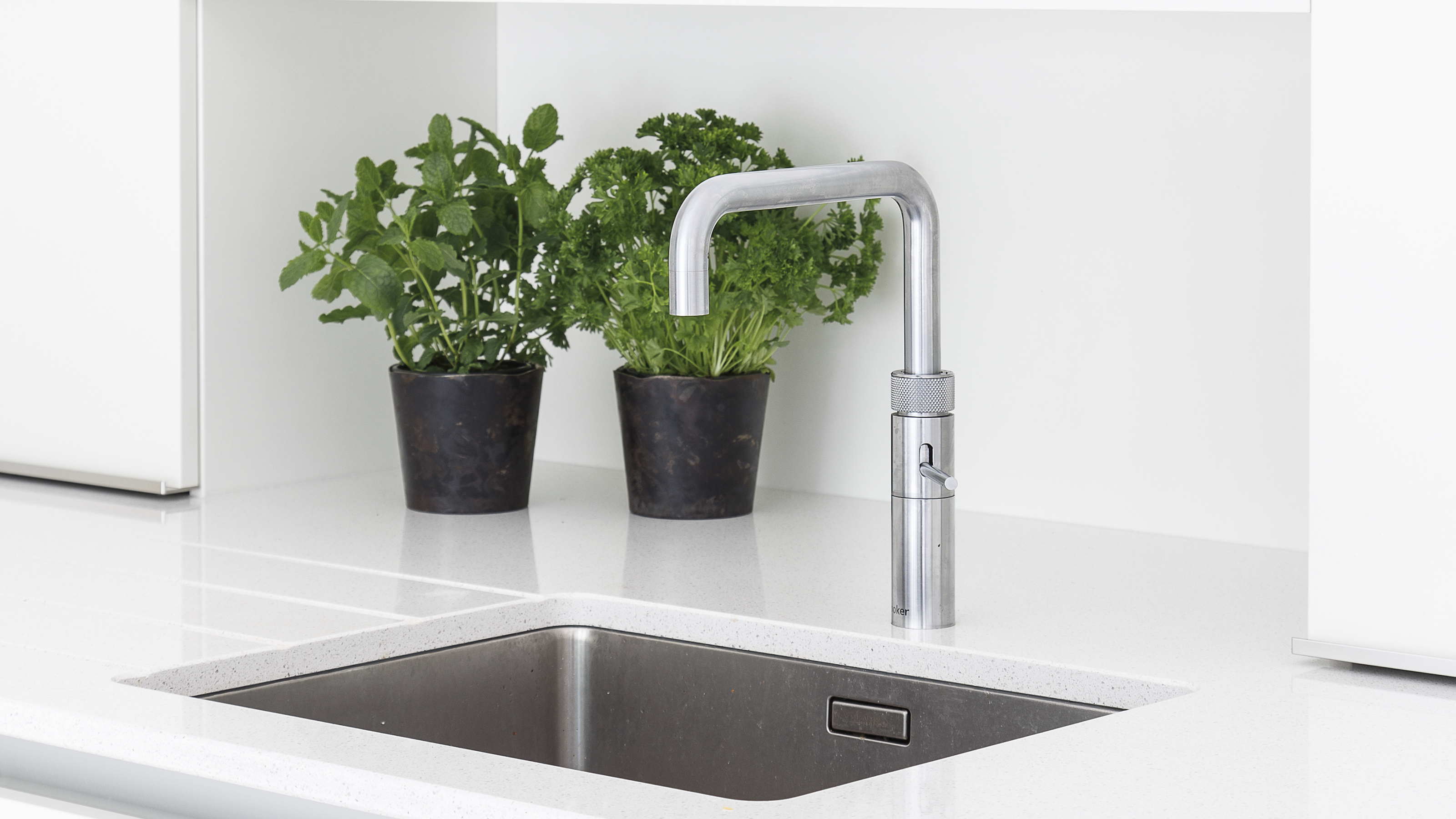
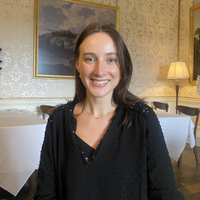
This article has been updated to show the new cost to run based on the January 2025 Energy Price Cap. It has also been fact-checked and any out-of-date information removed.
A boiling water tap is the ultimate kitchen luxury – instant hot water at your fingertips, perfect for that morning cuppa, quick pasta prep, or anything else that needs a rapid burst of boiling water. But while you’re enjoying the convenience, have you ever wondered how much it costs to run a boiling water tap, so you can know for sure whether or not you'll save money in the long run?
It's not hard to see why the best boiling water taps have caught our attention. not only do they save us space on our worktops, they also save time (there's no waiting around for a kettle to boil) and most importantly energy, as we only ever boil and use the water we need. It's something we discuss in our feature on hot water taps vs hot water dispensers.
'For those looking to invest, hot taps can provide long term savings as energy costs continue to rise', says Paul Bailey, Leader, Product Management, GROHE UK. 'Hot taps are an energy-efficient, convenient, and safe way to enjoy kettle-hot water on demand.'
So there's a lot to be said for adding one of these appliances to your home, but the question is, how much does it cost to run a boiling water tap? Let's find out...
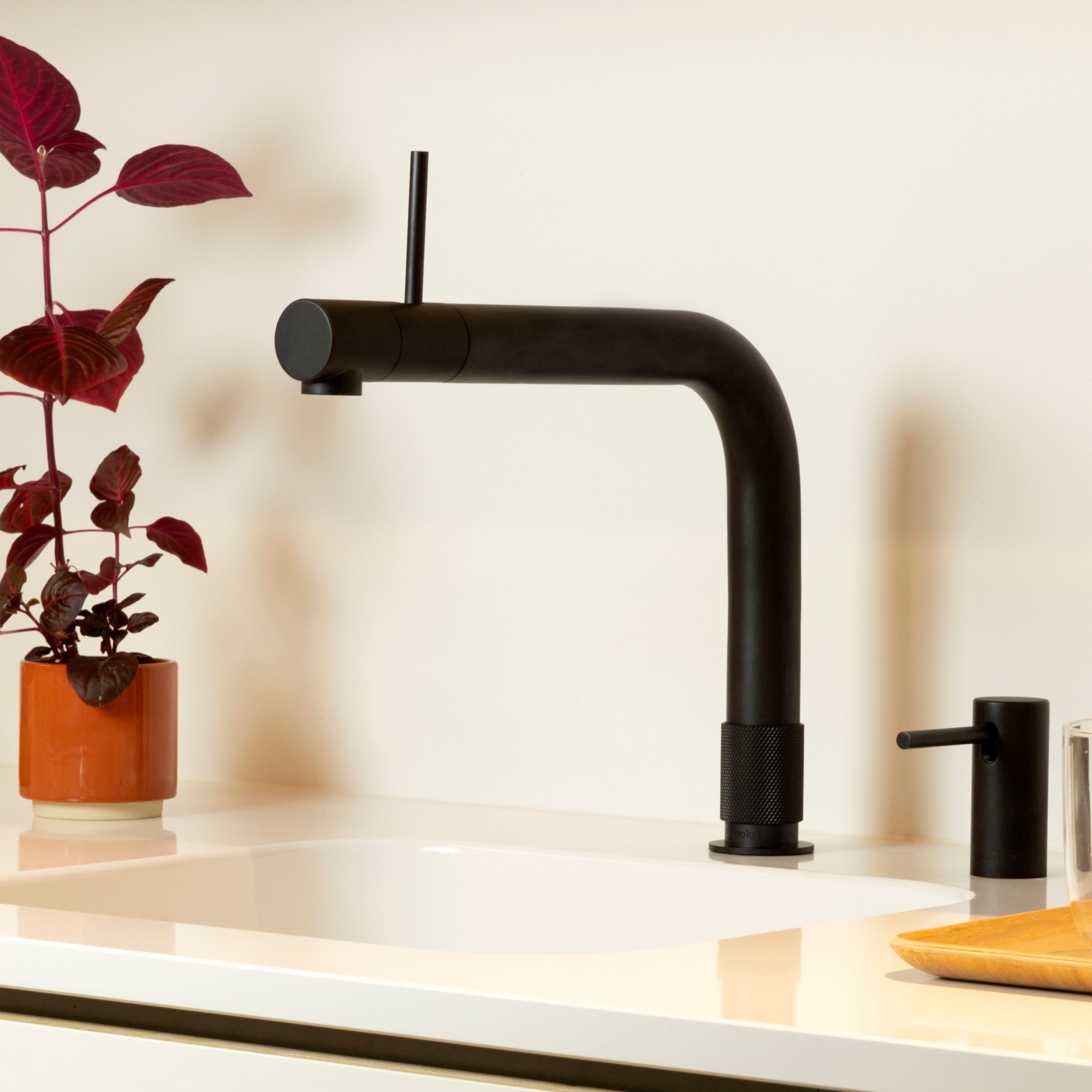
How much does it cost to run a boiling water tap?
We've asked the experts and done some calculations to find an up-to-date and accurate answer to how much does it cost to run a boiling water tap. If you're unsure where you stand in the boiling water tap vs kettle debate, the figures below might help you decide.
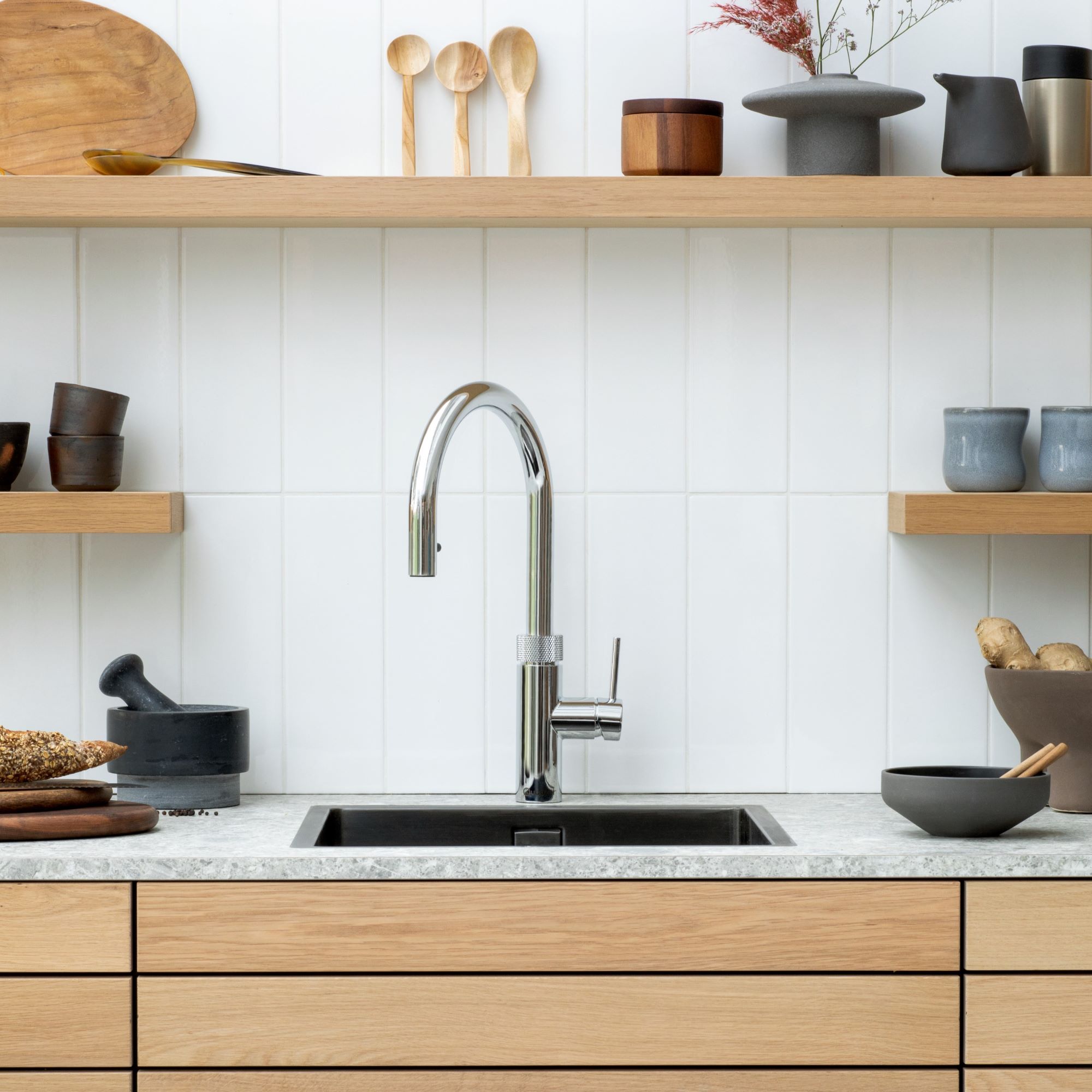
To work out how much does it cost to run a boiling water tap, it's helpful to first look at how much electricity does a boiling water tap use.
Quooker created the original instant boiling water tap, and they have an array of taps that require very little electricity to work ranging from 1,600 watts to 2,200 watts. There may be a slight variation in how much electricity a tap uses depending on the model and brand; for example, a GROHE Red tap uses 0.74 kWh to boil 3 litres of water per day (an approximation of the average UK household's water consumption).
Sign up to our newsletter for style inspiration, real homes, project and garden advice and shopping know-how
To demonstrate how little a boiling water tap can cost to run we've based it on a 1,600-watt tap with a 3 litre tank, and used the current price per kilowatt hour of electricity set by the energy price cap which, as of January 2025 is 24.86p.
- A 1600-watt boiling water tap would cost 39.8p per continuous hour of use, but to fully refill the 3 litre tank this would only cost around 10p, based on the average refill and reheat time of 15 minutes. Therefore, if you were to use 3 litres of water everyday from your boiling water tap it would cost £36.50 over the year.
Are boiling water taps cheaper to run than kettles?
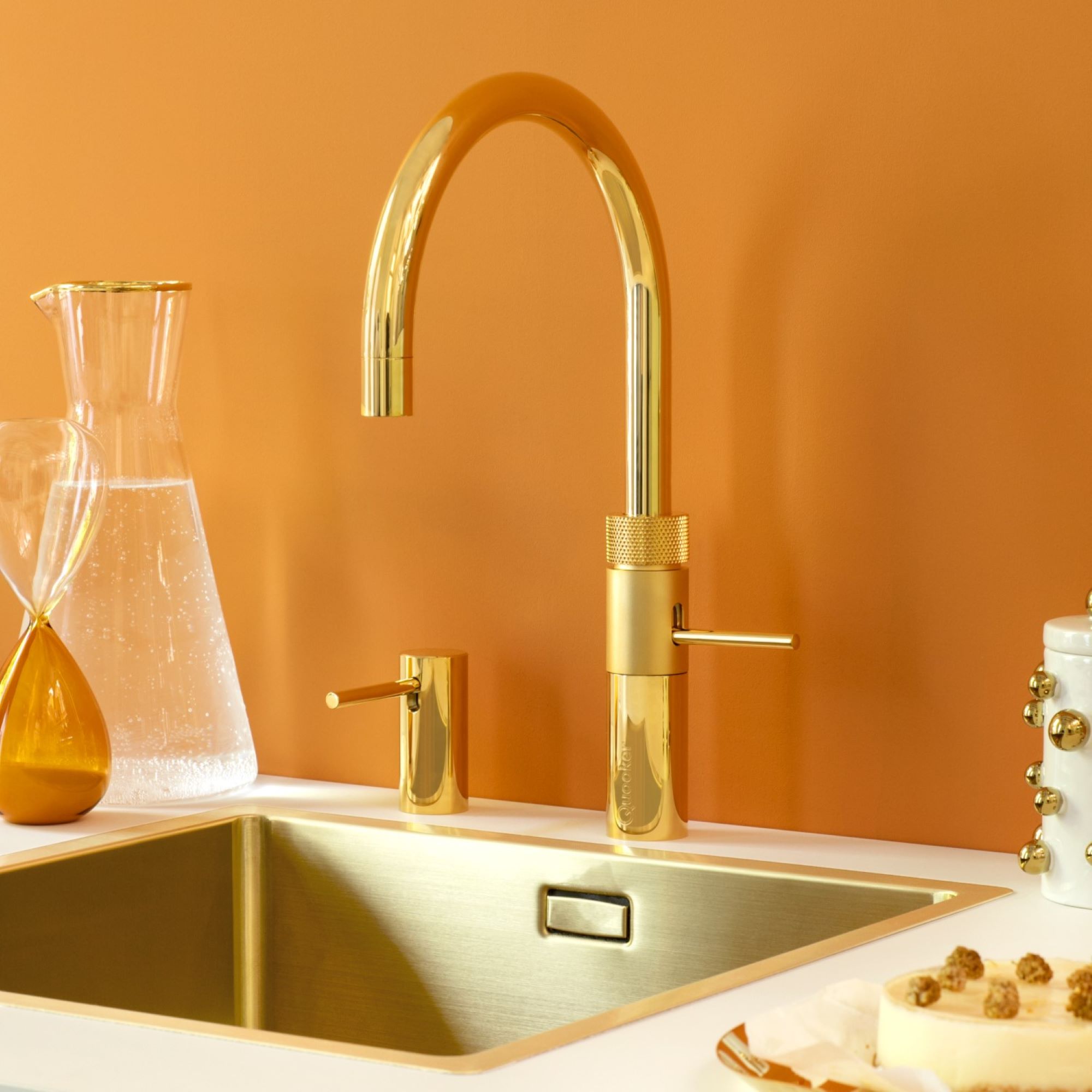
Boiling water taps use less energy and therefore cost less to run than the best kettles.
So if you were wondering how much does it cost to boil a kettle for a cup of tea, it will be more expensive than using an instant hot water tap. There's potential to save even more pennies using a tap because you can put the water directly into your cup, so there won't be any wasted - which can sometimes happen when filling up the kettle.
FAQs
Is it expensive to have a boiling water tap?
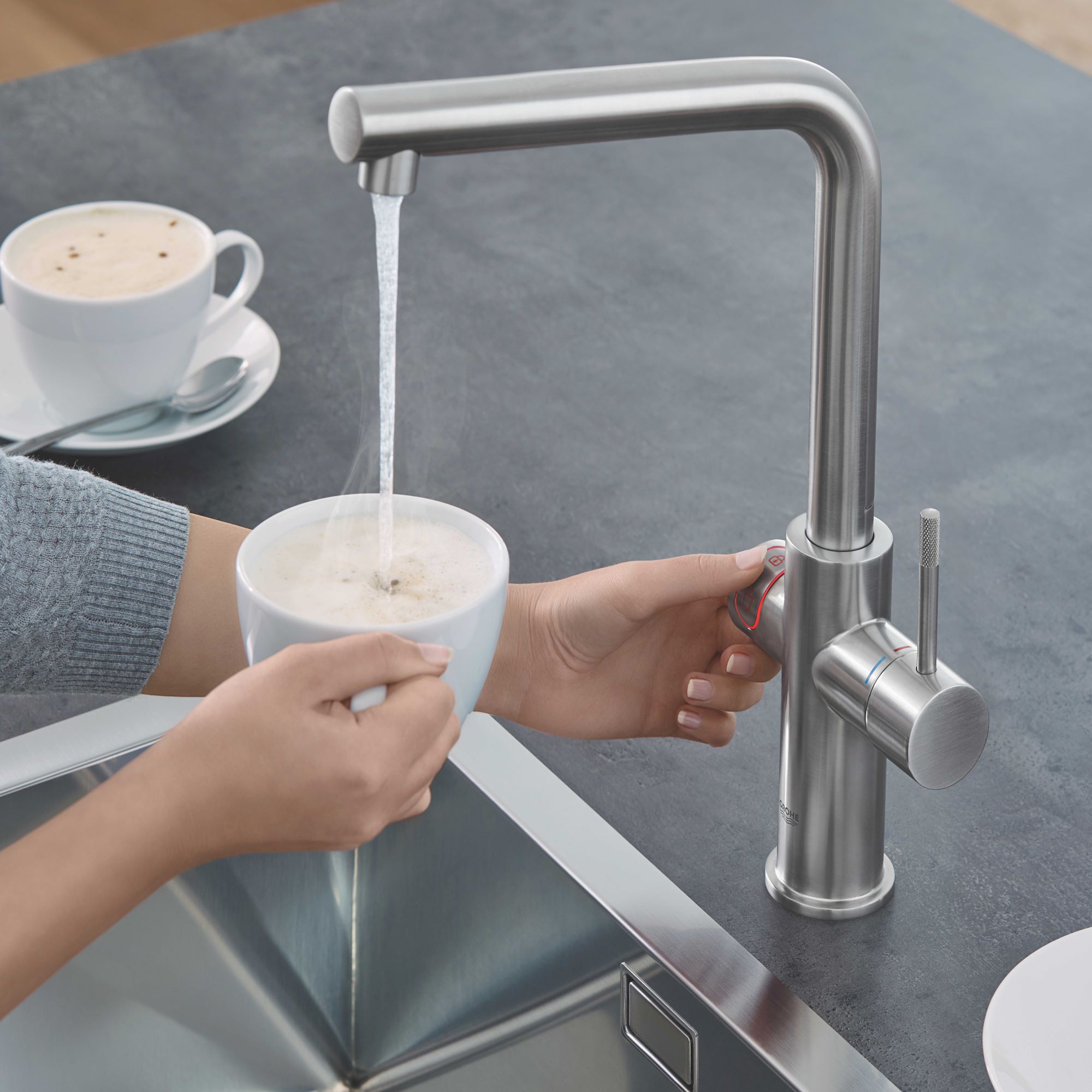
Boiling taps are cheap to run, but it's important to factor in the upfront cost and installation price. In the short-term, it's cheaper to buy a kettle than to purchase and install a boiling water tap, but keep in mind that they will save money on your energy bills in the long run.
'The cost of a Quooker installation is £99 if a tap and tank are purchased together. This should be done by an official Quooker installer', says Stephen. 'There are optional accessories including cold water filters, scale control, power switches that equally distributes energy between appliances, however all of these are not essential and the tap and tank can be purchased without.'
Because of how cheap Quooker taps are to run, the investment would soon pay off. One cup of tea for example costs only a fifth of a pence to make (£0.002) - meaning you could have 6 cups of tea for the same cost of boiling 1 cup of tea from the kettle.
Should I turn off boiling water tap at night?
'For most boiling water and kettle-hot taps, it is unnecessary to switch them off overnight, however it can help to bring down your energy consumption slightly', explains Adam Logan, Training Manager, GROHE UK & LIXIL EMENA.
'The GROHE Red doesn’t need to be switched off overnight, as it is incredibly well insulated and made of Titanium which aids fast reheating and prevents the build up of Limescale. As the GROHE Red doesn’t keep the water at a permanent 99°C, it allows for the temperature to drop to as low as 90°C.'
Turning off your hot water tap at night won't make a huge difference to your energy bills, but it can help lower them slightly. It makes sense to turn off your hot water tap when you're away on holiday, as it won't be being used for a prolonged period. Turning it off at night takes minimal effort and will save a few pounds over the course of the year.
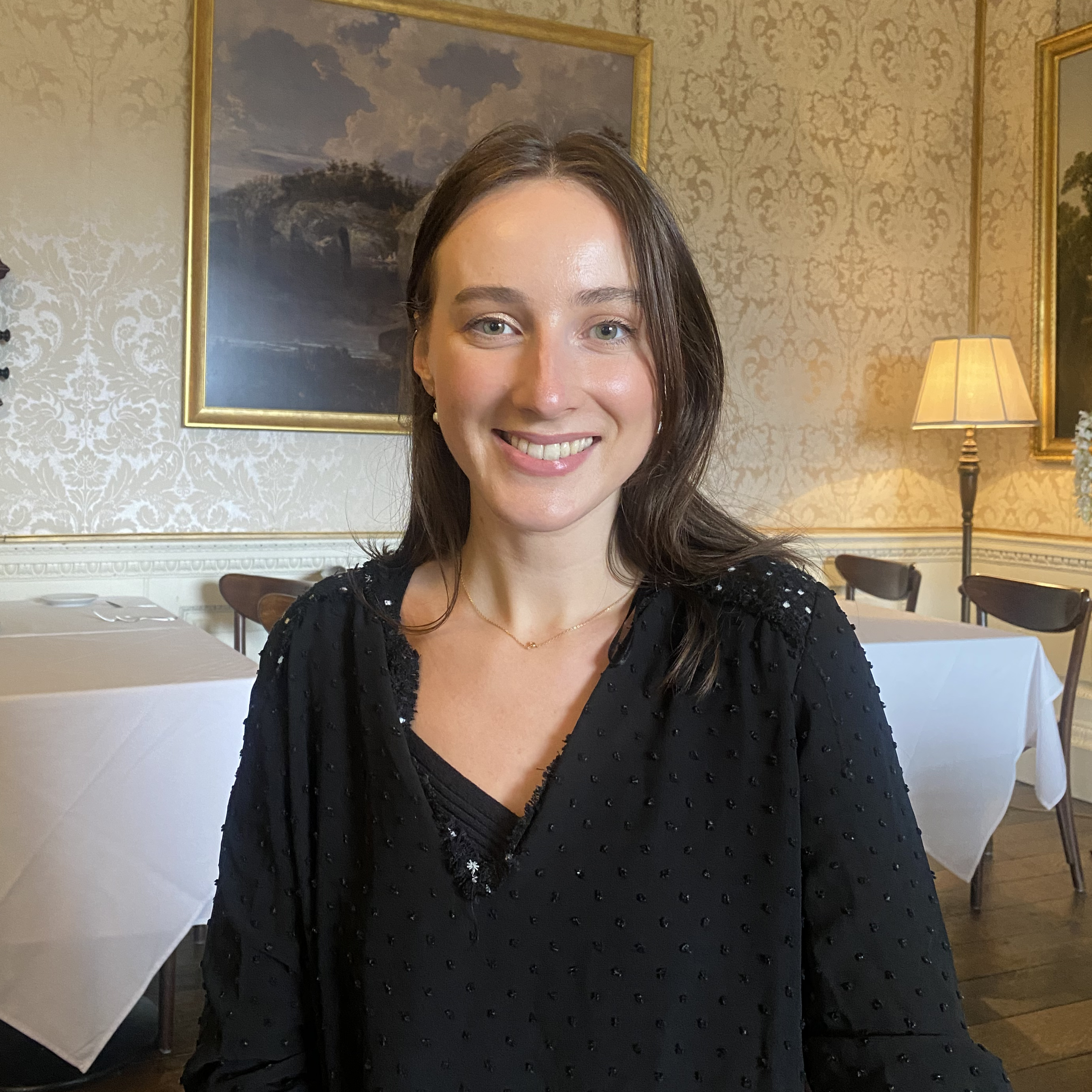
Katie has been writing freelance since early 2022, specialising in all things homes and gardens, following achieving a Masters in Media and Journalism. She started out writing e-commerce content for several of Future’s interior titles, including Real Homes, Gardeningetc, Livingetc, and Homes and Gardens. Since then she’s been a regular contributor on Ideal Home’s digital team, covering news topics, how-to guides, and product reviews.